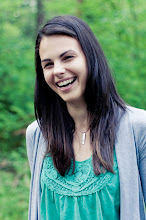The
Summative assessment happens during the eighth week of our inquiry
and it is used as an evaluation technique that reflects the children's
knowledge and understanding of the topic explored.
Community
Scenario:

The children
worked together to create a scene in the community. The children chose a
workplace and decided on a problem that will take place at the scene. They had
to decide who in the community could help and explore different ways of solving
the problem.
The Wind group's story
Workplace: A
community farm that grows vegetables and raises chickens and cows.
Props: A
farmer, a child, a dog, a cow, a doctor, a dentist, a veterinarian, a truck
driver and chickens.
The children
wanted to present their scenario and show the connections between people and
communities. The people on the farm grow the food and harvest it, the truck
driver picks it up and arranges deliveries to different stores in different
communities and people shop at those stores and enjoy the delicious food.


 The problem:
When the truck driver arrived at the farm for his usual pick up, the dog that
usually came to greet him was not there and he found that the farmer had a
toothache and couldn't work in the field that day. The potatoes were not packed
nor ready for pick up. The child that was helping the farmer had a terrible
tummy ache and couldn't get out of bed to help collect the eggs from the
chickens. The cows wouldn't eat any grass and so there was no milk. The driver
decided to help everyone on the farm and reached out to other community
workers: He phoned the Dentist to come help the farmer with his toothache, the
Doctor to come help the child and the Veterinarian to come help the cow that
wouldn't eat and the dog that didn't greet the driver as usual.
The problem:
When the truck driver arrived at the farm for his usual pick up, the dog that
usually came to greet him was not there and he found that the farmer had a
toothache and couldn't work in the field that day. The potatoes were not packed
nor ready for pick up. The child that was helping the farmer had a terrible
tummy ache and couldn't get out of bed to help collect the eggs from the
chickens. The cows wouldn't eat any grass and so there was no milk. The driver
decided to help everyone on the farm and reached out to other community
workers: He phoned the Dentist to come help the farmer with his toothache, the
Doctor to come help the child and the Veterinarian to come help the cow that
wouldn't eat and the dog that didn't greet the driver as usual.
Because of
all the help from all these different people, the activity on the farm
restarted and everyone was able to get their jobs done.
This story
showed an understanding of the importance of the responsibilities of each
person and the chain of tasks which must be completed for production to
continue as usual.
Trystan
"If the driver doesn't have food to pick up, then he can't get his job done."
Roy "So
we will not have food to buy from the store."
Jason
"Oh no, that can't happen."
The children
showed an understanding that part of building a stronger community is having
people who work together and help each other.














































